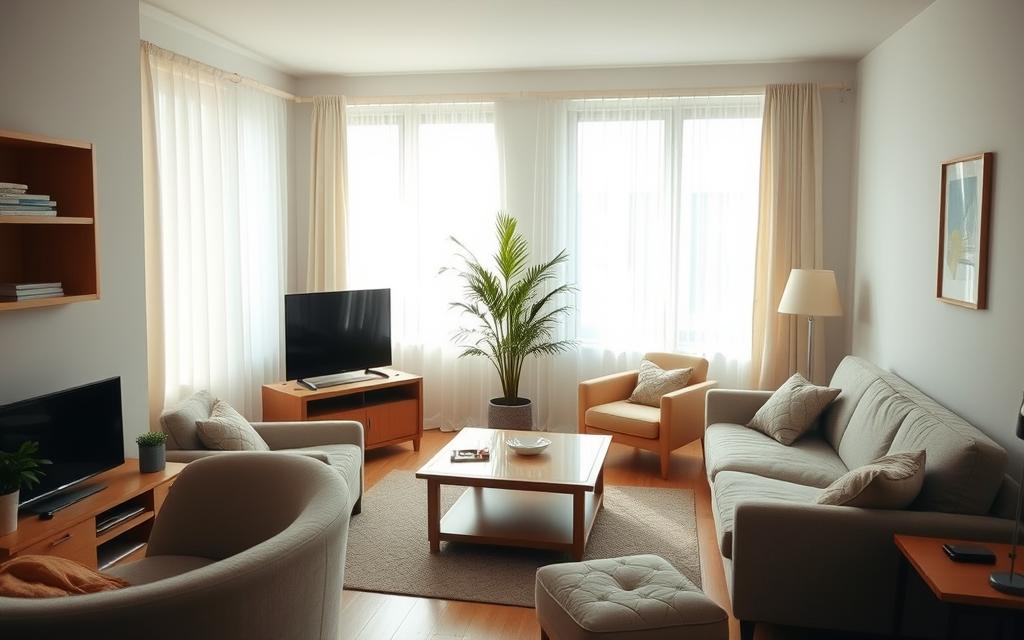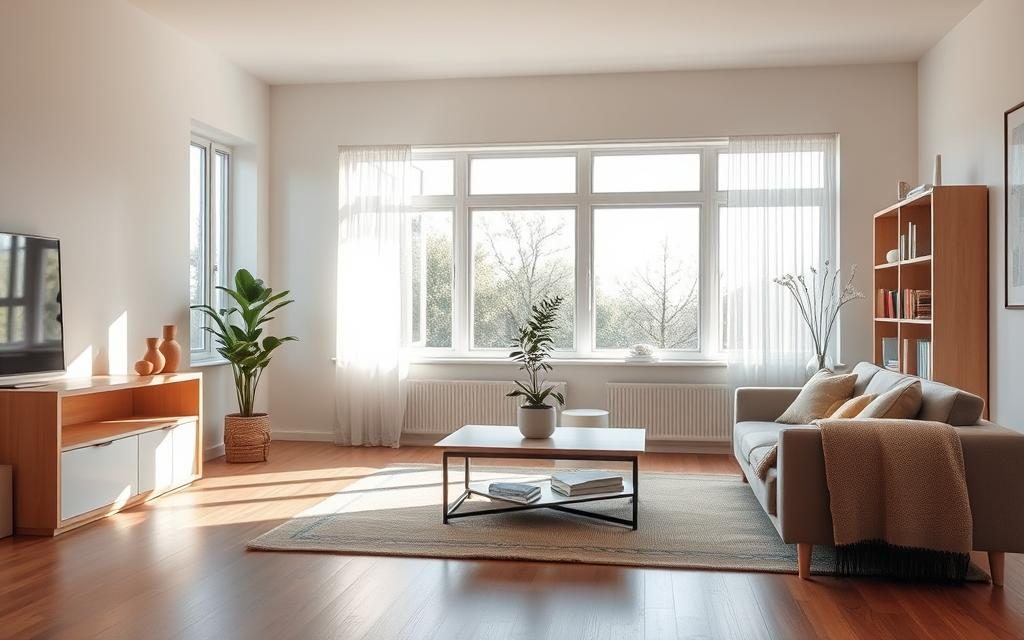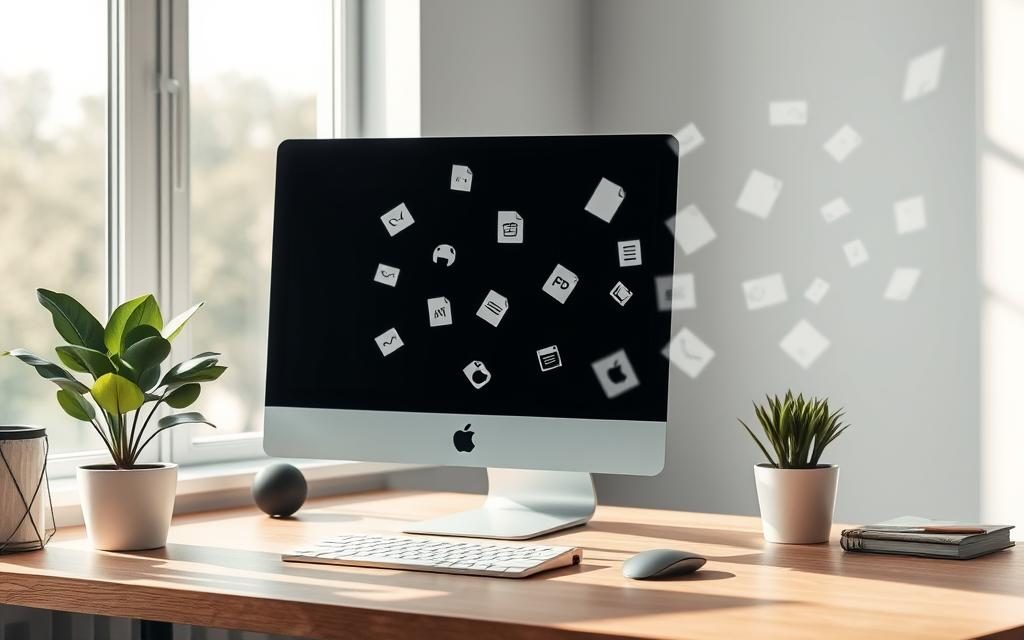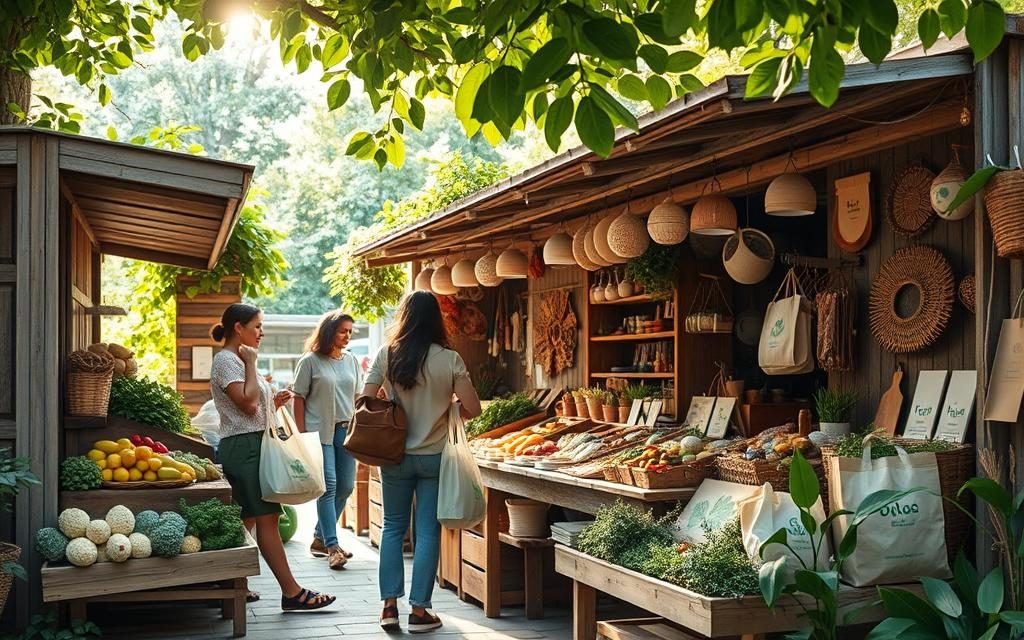
Minimalist lifestyle ideas for more joy! Explore the ultimate guide to decluttering and creating a happier life.
Minimalist Lifestyle Guide
Are you drowning in stuff, but starving for meaning? What if the key to true happiness lies not in accumulating more, but in letting go?
The minimalist lifestyle isn’t about living with nothing—it’s about creating space for everything that matters. Research shows that clutter does more than just fill your home. It also fills your mind.
A study in Personality and Social Psychology Bulletin found that mess makes us stressed. It hurts our memory and nervous system.
Modern life is full of messages telling us to buy more. But the minimalist way is different. It’s about choosing quality over quantity. By clearing out clutter, you gain freedom.
This guide will change how you see your stuff. You’ll learn how to live simply and take back control of your life.
Key Takeaways
- Understand how clutter impacts mental and physical well-being
- Learn practical decluttering techniques
- Discover the psychological benefits of minimalist living
- Develop strategies for intentional consumption
- Create more meaningful experiences through less physical stuff
Understanding the Essence of Minimalist Living
Minimalism is more than looks. It’s a way of life that questions how we buy things. It makes us think about what’s really important.
The minimalist movement is more than just cleaning up. It’s about choosing experiences and growth over stuff. Many Americans see the mental benefits of this lifestyle. Here are some interesting facts:
- The average American household has 300,000 items
- Adults throw away about 68 pounds of clothes each year
- Families spend around $1,700 on clothes yearly
Defining Modern Minimalism
Modern minimalism isn’t about having nothing. It’s about living with purpose. It’s about choosing what’s important and getting rid of the rest.
The Psychology Behind Simple Living
Simple living is good for your mind. It reduces stress and helps you focus. It lets you break free from always wanting more.
Breaking Free from Consumerism
Consumerism makes us unhappy all the time. Minimalism offers a different way. It teaches us to buy wisely and value quality over quantity. This saves money and helps the planet.
| Minimalism Aspect | Key Characteristics |
|---|---|
| Psychological Impact | Reduced stress, increased mental clarity |
| Financial Benefits | Lower spending, increased savings |
| Environmental Effect | Decreased waste, sustainable living |
Embracing minimalism lets us live more intentionally. It frees us from the weight of too much stuff.
The Journey to a Minimalist Lifestyle
Starting a minimalist journey takes courage and commitment. It’s about understanding that less can be more. Studies show that 80% of what we own is unused, causing clutter.
Your journey begins with small steps. Minimalism isn’t about removing everything. It’s about making space for what’s important. By choosing what you really need, you’ll find freedom and less stress.
- Identify items that genuinely add value to your life
- Recognize emotional attachments to unnecessary possessions
- Create deliberate spaces that promote calm and clarity
- Practice mindful consumption
Studies show big benefits of minimalism:
| Benefit | Impact |
|---|---|
| Reduced Housework | 40% time savings |
| Stress Reduction | Immediate nervous system relaxation |
| Focus Improvement | Enhanced mental clarity |
Your journey to minimalism is unique. Start slow, be kind to yourself, and celebrate each small win.
Creating Your Personal Minimalism Roadmap
Starting a minimalist journey needs careful planning and thinking about yourself. It’s about finding your own way to simplicity. Your roadmap is made just for you, based on your goals and values.
Setting Clear Intentions
First, you must know what you want. Think about what’s important in your life. Look at your current life and see where you can simplify things.
- Determine your primary motivation for minimalism
- Visualize your ideal simplified lifestyle
- Recognize possible challenges on your journey
Identifying Core Personal Values
Your values are the base of a true minimalist life. Find out what truly makes you happy and gives your life meaning. Everyone is different, so make your path your own.
| Value Category | Potential Minimalist Approach |
|---|---|
| Family Connection | Reduce material distractions, create quality time |
| Professional Growth | Streamline work processes, focus on key projects |
| Personal Health | Simplify nutrition, prioritize wellness routines |
Establishing Realistic Goals
Setting goals for minimalism needs a smart plan. Start small and keep moving forward. Remember, minimalism is a journey, not a quick fix.
- Start with one area to declutter
- Make specific, measurable goals
- Keep track of your progress
- Change your plan if needed
Your minimalism roadmap is a guide that changes. Be flexible and kind to yourself as you move toward a simpler life.
Decluttering Fundamentals: Where to Begin

Starting a decluttering journey can seem big. But, breaking it down makes it easier. Begin small and keep going. This way, you’ll make your home simpler and feel less stressed.
Here are some basic tips to start:
- Start with small, easy spaces like junk drawers or single closets
- Use the Four-Box Method to categorize items effectively
- Apply the 90/90 Rule to assess item usefulness
- Implement a one-in-one-out policy for new purchases
Decluttering needs a plan. Here are some tips to help you:
| Decluttering Strategy | Time Investment | Potential Impact |
|---|---|---|
| 12-12-12 Challenge | 30 minutes | 36 items processed |
| Daily One-Item Removal | 5 minutes | 365 items annually |
| 30-Day Waiting Period | Ongoing | Reduced impulse purchases |
Decluttering is a personal journey. The KonMari Method says keep only what makes you happy. Micro-Minimalism starts with tiny spaces to build confidence. Start small to make your home more organized.
The Art of Letting Go: Emotional and Physical Clutter
Emotional decluttering is a journey of change. In today’s world, 60% of people feel too busy. It’s key to let go of both physical and emotional clutter for our minds.
Handling sentimental items needs care. Our memories are valuable, but we don’t need to keep everything. Here are ways to deal with special items:
- Photograph cherished items before letting them go
- Keep only items with profound emotional significance
- Create digital memory books
- Practice gratitude for the experience, not the object
Processing Sentimental Items
Digital minimalism helps with emotional decluttering. We check our phones over 100 times a day. This makes it hard to truly connect and find peace.
| Emotional Clutter Type | Impact | Decluttering Strategy |
|---|---|---|
| Physical Mementos | Creates storage anxiety | Selective preservation |
| Digital Notifications | Constant mental interruption | Systematic app management |
| Unnecessary Relationships | Emotional drain | Intentional connection |
Digital Decluttering Strategies
Digital minimalism means making your online space intentional. Unsubscribe from emails you don’t need, limit social media, and organize your digital world for clear thinking.
Creating Space for What Matters
Embracing emotional decluttering leads to better connections and less stress. It’s not about getting rid of everything. It’s about making room for what truly adds value to our lives.
Building a Capsule Wardrobe
Creating a capsule wardrobe changes how you think about clothes. It makes choosing outfits easier and more stylish. You get to pick pieces that are both useful and fashionable.
A capsule wardrobe is all about picking the right items. It has 30-40 pieces that you can mix and match. This way, you can make many different outfits.
Key Strategies for Building Your Capsule Wardrobe
- Focus on high-quality basics with subtle unique details
- Select versatile pieces that work across multiple occasions
- Choose a consistent color palette
- Invest in timeless, well-crafted items
Essential Capsule Wardrobe Pieces
| Category | Recommended Items |
|---|---|
| Tops | White T-shirt, Blazer, Long-sleeve sweater |
| Bottoms | Black leggings, Tailored trousers, Jeans |
| Outerwear | Trench coat, Lightweight jacket |
| Accessories | Tote bag, Hoop earrings, Versatile belt |
Pro tip: Experiment with one or two accent colors to add personality while maintaining a minimalist aesthetic.
Choosing a capsule wardrobe helps you feel less stressed about what to wear. It also makes your closet less cluttered. You’ll find a style that truly shows who you are.
Minimalist Home Organization Systems
Creating a tidy living space needs smart home organization. It’s about keeping things simple and useful. This way, you feel clear-minded and less stressed every day.
Good storage is key to a neat minimalist home. You want to use space well and keep things looking clean. This helps you feel calm and productive.
Strategic Storage Solutions
- Invest in multipurpose furniture with hidden storage compartments
- Use vertical shelving to maximize wall space
- Select clear, uniform storage containers
- Implement drawer dividers for precise organization
Space Optimization Techniques
To make your living areas better, think about how to use space well. Minimalist home design is all about being useful without losing style.
| Area | Optimization Strategy |
|---|---|
| Living Room | Floating shelves, nested tables |
| Bedroom | Under-bed storage, wall-mounted closet systems |
| Kitchen | Magnetic knife strips, overhead pot hangers |
Daily Maintenance Routines
To keep a minimalist home, you need to stick to daily habits. Make simple routines to stop clutter from building up:
- Put things back where they belong right after using them
- Do a quick tidy-up for 10 minutes every evening
- Get rid of things you don’t need regularly
- Clean as you go during the day
By following these tips, you’ll have a peaceful, efficient home. It will support your minimalist way of life.
Sustainable Living Through Minimalism
Sustainable minimalism changes how we live and what we buy. More people now think about their impact on the planet. They choose to live in a way that’s good for the earth.
Minimalism and being green go hand in hand. When we buy less, we make less waste. Studies show minimalists make 23% less waste than others. This shows how living mindfully can help our planet.
Key Strategies for Sustainable Minimalism
- Prioritize quality over quantity in purchases
- Choose products with minimal environmental impact
- Reduce packaging waste
- Support brands with sustainable practices
Now, 78% of people say they care about the planet when they shop. This shows more people want to help the earth with their choices.
Practical Approaches to Eco-Friendly Living
- Implement a no-buy challenge for non-essential items
- Repair and repurpose existing belongings
- Choose products with long-term durability
- Donate or recycle unused items
Living sustainably is about making better choices. It’s not about being perfect. It’s about doing what’s right for our planet.
Financial Freedom Through Simple Living
Financial minimalism changes how we handle money. It leads to financial stability and happiness. By living simply, we avoid spending too much and debt.
Budgeting Basics
Creating a good budget needs planning and knowing yourself. Start by understanding your money situation. Use these budget tips:
- Track every expense for one month
- Categorize spending into essential and non-essential items
- Create a realistic monthly budget
- Identify areas of possible savings
Mindful Spending Habits
It’s important to spend wisely. Ask yourself important questions before buying: Do I really need this? Will it make my life better? Can I do without it?
| Investment Bucket | Recommended Allocation | Purpose |
|---|---|---|
| Safety Net | $500-$1000 | Emergency Fund |
| Retirement Fund | 10-15% of income | Long-term Financial Security |
| House Fund | 5-10% of income | Future Property Investment |
| Wealth-Building Fund | 5-10% of income | Additional Investments |
Debt Reduction Strategies
Beating debt needs a plan. Start with high-interest debts. Try these strategies:
- Snowball method: Pay off smallest debts first
- Avalanche method: Target highest interest debts
- Consolidate multiple debts
- Negotiate lower interest rates
Minimalism isn’t about giving up. It’s about focusing on what’s important. By simplifying money matters, we reduce stress, save more, and live more intentionally.
Digital Minimalism in the Modern Age

In today’s world, getting rid of digital clutter is key. Our phones and devices fill us with too many alerts. This makes our minds split and our stress go up.
Social media minimalism is not about giving up tech. It’s about using it wisely. Studies show cutting out extra tech for 30 days helps us use the internet less.
- Turn off unnecessary notifications
- Schedule intentional technology use
- Assess digital tools’ true value
- Prioritize face-to-face interactions
Keeping a balance with technology is important. Digital minimalism helps us use our time better. It lets us think clearer without digital distractions.
Here are some ways to practice digital minimalism:
- Audit your digital consumption
- Eliminate low-value digital activities
- Establish clear boundaries
- Create meaningful offline experiences
Cal Newport’s book “Digital Minimalism” offers a three-step plan. It teaches us to see the harm of digital clutter, use tech better, and be more intentional online.
By following these steps, we can change how we use digital tools. This can make us less anxious and more focused in our connected world.
Creating Minimalist Daily Routines
Making daily routines is key to being more productive and effective. Minimalist routines change how we manage time. They help us focus on what’s important. Minimalist living means making room for meaningful things, not getting rid of everything.
Morning Rituals for Purposeful Starts
Good morning routines include activities that energize and get you ready for the day. Here are some important ones:
- Wake up at the same time every day
- Do 10 minutes of meditation
- Write down your top three goals
- Do a short workout
Strategic Time Management Techniques
Being productive means using smart time management. The 90-90-1 rule is great. It says spend the first 90 minutes on your most important task.
- Find your most important task
- Turn off distractions
- Focus hard on your task
- Take short breaks
Evening Wind-Down Practices
Evening routines help calm your mind and get ready for sleep. Cut down on screen time. Think about what you did well today. Make your space calm for rest and recovery.
Mindful Consumption Practices

Living a minimalist life means thinking carefully about what we buy. Mindful shopping is more than just buying less. It’s about choosing things that really matter to us and fit our goals.
Being a conscious consumer means we should think twice about our shopping. Today, people buy 60% more clothes than 15 years ago. But they keep them for half as long. This shows we need to buy more thoughtfully.
- Reflect before purchasing: Ask if an item truly adds value to your life
- Implement a 24-hour waiting period for non-essential purchases
- Focus on quality over quantity
- Consider the long-term impact of your consumption
Smart shopping can change how we see things we own. Choose items that last long and can be used in many ways.
| Consumption Strategy | Impact |
|---|---|
| Secondhand Shopping | Reduces waste, saves money |
| Ethical Brand Support | Promotes sustainable practices |
| Experience-Based Purchasing | Creates meaningful memories |
Using these smart shopping tips can help us buy less and live more intentionally. It supports a lifestyle that’s better for our planet.
The Impact of Minimalism on Mental Health
Minimalism is more than just cleaning up. It’s a way to make our minds healthier. It helps us live life in a simpler way.
Stress Reduction Benefits
Studies show that minimalism is good for our minds. A study found that too much stuff can make us stressed. Minimalist spaces help us feel calm and clear.
- Reduces anxiety by eliminating visual distractions
- Lowers stress hormone production
- Creates a sense of calm and control
Enhanced Focus and Clarity
Minimalism makes our minds clearer. People like Mike Chappell say it helps them focus better. It lets us use our energy for important things.
Improved Decision Making
Minimalism makes choosing easier. Conscious consumption helps us pick what’s truly important. Tyler J. Jensen says it leads to a more real and meaningful life.
Choosing minimalism is more than tidying up. It’s about making our minds healthier. It helps us feel less stressed, clearer, and more focused on what’s important.
Building a Minimalist Support System
Starting a minimalist life can be tough without support. Building a strong minimalist community is key to keep going and finding new ideas. Meeting others who live like you can make your journey better.
Creating a good support network needs smart steps:
- Join online minimalist forums and social media groups
- Attend local minimalism workshops and meetups
- Start or join a minimalist book club
- Follow minimalist blogs and podcasts
Having a supportive community is powerful. They offer advice, emotional help, and keep you on track.
| Community Type | Benefits | Engagement Level |
|---|---|---|
| Online Forums | 24/7 Access, Global Views | High |
| Local Meetups | Real People, Local Tips | Medium |
| Social Media Groups | Quick Tips, Visual Ideas | High |
Your support group should help you grow and celebrate your wins. Being around people who value experiences over stuff can make your minimalist life better.
Maintaining Long-term Minimalist Habits
Keeping a minimalist lifestyle needs hard work and smart choices. It’s not just about getting rid of stuff. It’s about making habits that help you improve every day.
To stay on the minimalist path, try these seven habits:
- Regular Decluttering Rituals: Set a time each month to check your stuff
- Intentional Shopping: Think carefully before you buy
- One-In-One-Out Rule: Get rid of old stuff before buying new
- Digital Detox: Keep your digital life tidy
- Gratitude Practice: Thank the things you already have
- Time Management: Choose wisely how you spend your time
- Value Alignment: Make sure your things match your values
Emotions can make us buy more than we need. Knowing this helps us avoid old habits.
| Habit | Impact on Minimalist Lifestyle |
|---|---|
| Intentional Purchasing | Reduces unnecessary buying |
| Regular Decluttering | Keeps your space simple |
| Mindful Technology Use | Reduces digital stress |
Remember, it’s not about being perfect. It’s about making small steps every day. Be patient and kind to yourself as you work on your minimalist lifestyle.
Conclusion
The minimalist lifestyle is more than a trend. It’s a way to live that helps us grow. By making our lives simpler, we make room for what’s important.
This journey is personal and takes time. We need to keep working on it and think about ourselves.
Being minimalist isn’t just about cleaning up. It makes our minds clearer and our lives less stressful. It also helps us save money.
It’s about making choices that match our values. This helps us avoid feeling trapped by too much stuff.
Minimalism helps us find true happiness in a busy world. It’s about focusing on what really matters. This way, we live more intentionally.
Every person’s path to minimalism is different. Start slow and be kind to yourself. Remember, growing is a lifelong journey.
The benefits of living simply are huge. They lead to happiness, focus, and a more real life.




